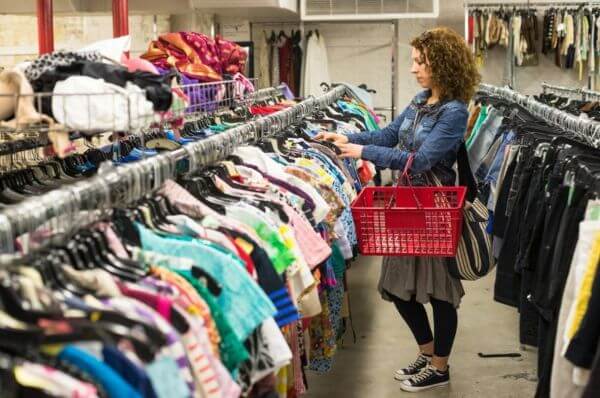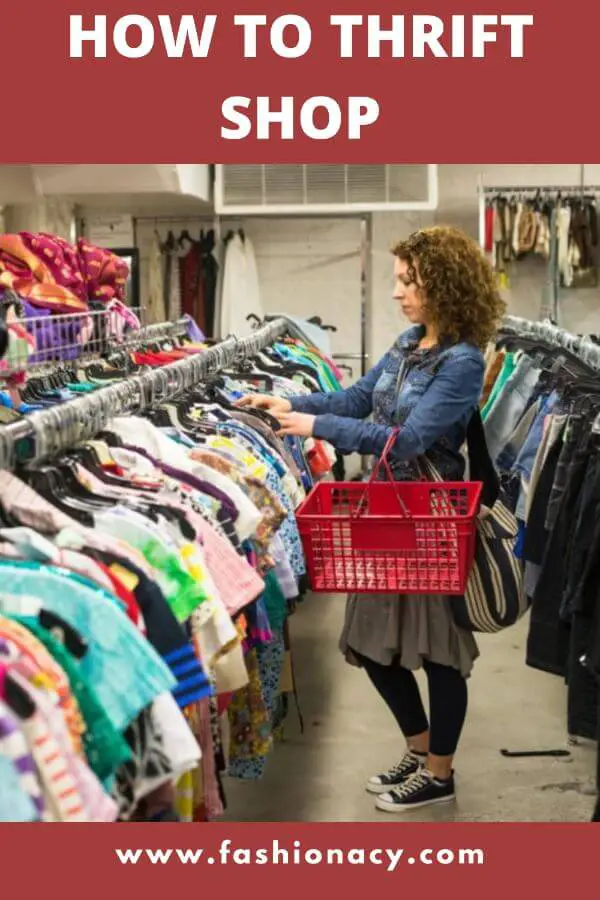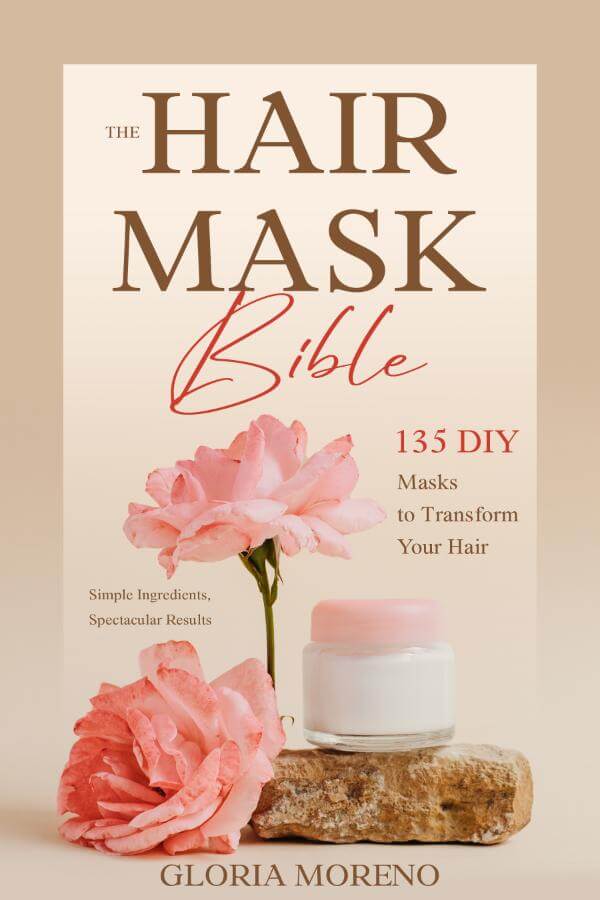
In this article, I talk fully about thrifting and all of my insider tips and tricks for doing it well and really finding some really nice items.
Thrifting can be quite advantageous for your budget, the environment, and for you personally.
The fact that purchasing one used item reduces its carbon footprint by 82 percent absolutely astounded me.
It can be a terrific idea to add some higher-end or aspirational goods to your closet by doing some secondhand shopping. For instance, if you’re looking for a really expensive designer bag but couldn’t afford it at full price, you can find one used for only a little portion of the price.
Shop With a List
My first piece of advice is to make a list before you go shopping, and this applies to all kinds of shopping, not just secondhand.
The more clearly you can see what you need and want in your closet, the easier it will be for you to decide which sector to shop in and what colors to look for. The products you actually need have a tendency to jump out at you from the racks a little bit easier.
Shop by Color or Texture
Instead of just looking for the one thing, I actually search a little bit beyond. I try to be as specific as possible by looking the color, texture, or desired hem length.
Because it’s so much simpler for our eyes to focus on a texture or color than a general phrase, like “jacket,” this enables me to quickly scan small parts at a time and quickly identify.
In terms of hem length, this is very useful when looking for skirts and dresses because you can just scan the bottom of the racks, making it easy to recognize and allow you to focus quickly on those pieces if you’re looking for a midi or a maxi.
Be Patient
One of the most crucial principles of thrift store shopping is to be extremely patient and give yourself a substantial window of time to shop. Even with those tips, it could still be difficult to find what you’re looking for.
Because it’s unlikely to happen if you enter quickly, under pressure, and expecting to find something right away.
You’ll walk out disappointed and never want a secondhand shop again, which is no good, it’s a lot of fun.
Be Open Minded
Being open-minded is also quite beneficial because it enables you to rethink a certain piece if it isn’t exactly what you’re looking for.
You could, for example, change buttons out on a blazer or a jacket or get something tailored so that it fits you just right.
Check at Men’s
The menswear section is one of the areas I believe is important to consistently check. This holds true for vintage, consignment, and thrift stores.
Men’s piece is particularly recommended because it often costs less than women’s clothing and because you can find some amazing large pieces there.
Try Everything On
Never make a judgment based on size; try everything on. For what you’re looking for, check out every size department.
It’s important to try anything on even if you find it in your size. Be flexible because you might pass something up simply because it isn’t a size for you.
Wear on a Fitted Base Layer
I’m not sure why, but I feel like women generally don’t love going to the dressing room and trying things on.
When thrift shopping, and this is especially important if you’re going to flea markets because there are frequently no change rooms, it’s really important to wear either leggings and a camisole or things that you can easily peel away that are extremely form-fitting so you can quickly try on pieces without having to get completely naked in front of other people or you can avoid the change room.
Check The Discard Rack
There is a reason why you should go near the change rooms and that is the discard rack. There are some good pieces there that you can find because they probably were among the best pieces if they had already been picked up and worn.
So hurry over to that discard rack.
Footwear Trick
If I notice a pair of shoes that I like, I put them on and I browse the rest of that department while wearing those shoes, depending on the consignment shop, the owner, and the atmosphere in that store, especially when thrifting.
I have a chance to determine whether or not they will be comfy because they have already been worn and I’m not wearing them outside.
Re-stock Days
I always ask the staff what day their stock typically goes out on the floor. Stock just regularly arrives and is renewed in consignment, vintage, and thrift stores most of the time.
However, they usually conduct a larger replenishment on one particular day.
See Out Affluent Neighborhoods
When it comes to choosing the best thrift or consignment stores, I usually tend for those that are located in more affluent or established neighborhoods because those houses are more likely to discard products that are of higher quality or higher end.
Bring Cash
I usually bring cash when I go shopping at independently owned boutiques, thrift stores, or flea markets.
Even if it’s merely to get the tax off, I believe there’s no harm in negotiating. Having cash can always help your case a little bit, especially if you believe the garment is overpriced.
Be Picky
With second-hand, thrift, and even vintage shopping, it’s still quite easy to get carried away even though I make a list and am fairly disciplined when I go shopping.
In the end, it’s still critical to exercise the same caution and self-control when shopping at thrift stores as when doing so in a traditional retail setting.
Shopping ethically or sustainably created products is just one aspect of conscious consumption. It involves taking a close look at oneself and looking how one uses clothing. Are we utilizing them to their full potential by wearing, adoring, and creating with them?
So even though it only two dollars, I don’t think it justifies the purchase if it’s not a piece that you absolutely adore.
Inspect The Garment
The next point is especially crucial if you are thrifting or shopping at a flea market; you should definitely look for any symptoms of wear and tear that you know you won’t want to spend time or effort repairing.
Try online
Last but not least, if you’re new to secondhand shopping, I would absolutely suggest beginning with online secondhand businesses, whether it’s a threadUP or something more upscale like the RealReal. It’s so much easier to look through all of the possibilities, including size, color, and exact garment. If you’d like, you can even search by brand.
If you’ve never done any second-hand shopping before, it’s a good way to get started.



